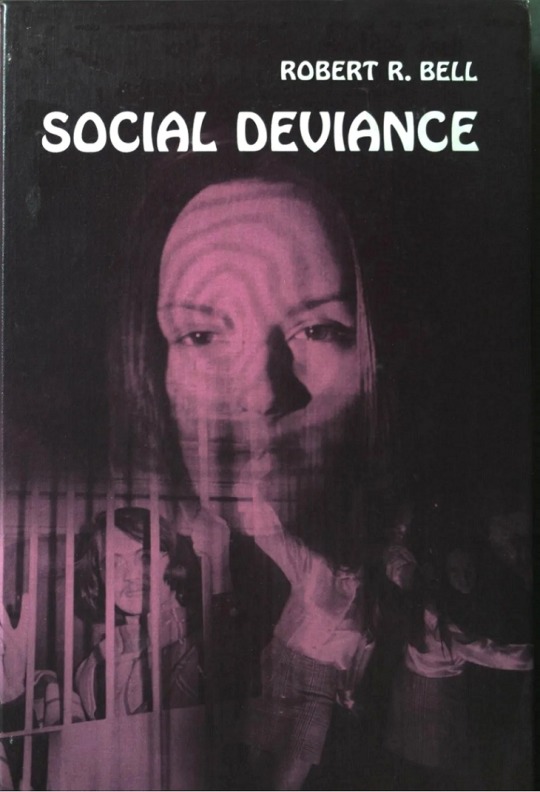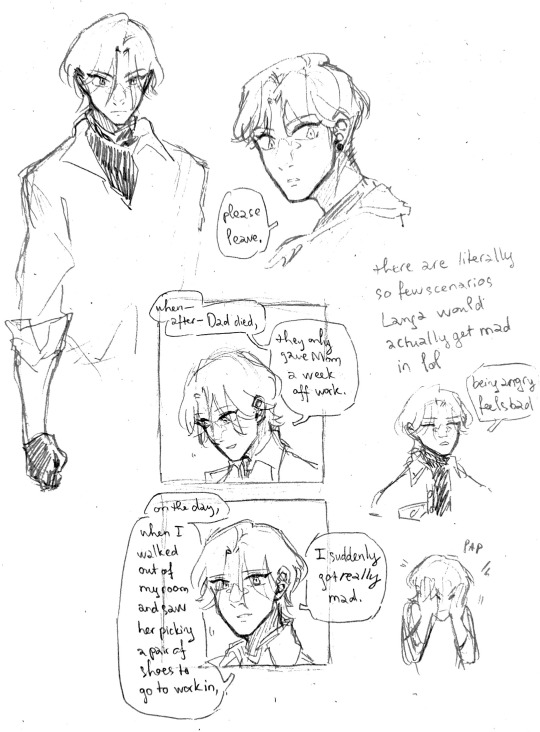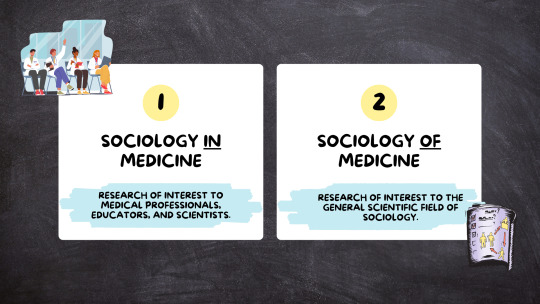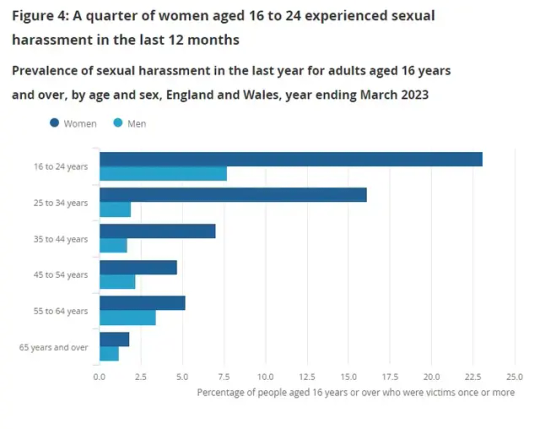#social deviance
Explore tagged Tumblr posts
Text

Robert R. Bell - Social Deviance - Dorsey Press - 1971
#witches#deviates#occult#vintage#social deviance#social#deviance#psychology#dorsey press#robert r. bell#1971
166 notes
·
View notes
Text
listening to shut im talking rn, get Jack Manifold on tumblr STAT.
#bros ranting about cannibalism and other shit considered socially deviant#and how (under certain circumstances) cant see how its immoral#(if no one is murdered or corpse is defiled etc.)#While everyone else is looking at him like hes insane#I UNDERSTAND YOU JACK ITS OKAY#LIKE YES EVALUATE THE MORAL PANIC OF SOCIAL DEVIANCY KING GOOD FOR U#shut up im talking#tommyinnit#jack manifold
16 notes
·
View notes
Photo



langa special
#sk8 the infinity#hasegawa langa#kyan reki#renga#sure. every shrimp is a prawn etc#man. listen. langa is my core ''freaks make the world go round'' baby rn#I have like. a Thesis in my brain abt skateboarding and how its viewed in sk8 and like. deviancy and social norms and#the intrinsic relation between being cool and being a weirdo. gods I did Not shut up at mim abt it last night#or two nights ago. time is fake#fuckign brought up adam in relation to warfred bartosz too that was embarrassing#(for the record my opinion on adam is ''he is too rich and being less rich would literally cure him'')#but yeah I'm laying a bit of ''purposefully thick'' on langa here. its not that the boy doesnt know its that he doesnt care#guy who deals with anxiety by simply not thinking#every day in langas brain he walks into a room full of smashed cups and vases and he like. picks up a few pieces at a time#and puts em on the counter. hes been doing this for months#bet kid has set fire to something in a steel barrel at least once. langa youre a real one to me#anyways! the ''tastes like ant'' thing is real I just experienced it. idk why but I think? oolong caramel?#can smell Really close to the ant smell. it is Very weird#(I did finish that piece of cake anyway. paid for that shit)#last night has been full of events! that I am still digesting. theater very good. hangin out with friends very good too#heres to freaks. makin the world go round. gotta be weird to be cool!#have a good night! I pass the fuck out now. goobaba. tilt ur stage a little bit it makes a world of difference
151 notes
·
View notes
Note
Wait fr
Netflix is turning gay lovers into brothers??? And they claim we have low media literacy
What ass backwards kind of choice is that to make in 2024 I am baffled
Poor Oscar Wilde truly

The Picture of Dorian Gray, Chapter 9
imagine reading that and thinking "ah yes Basil and Dorian should totally be siblings." The fucking galls.
Oscar Wilde was put on trial for "indecency", aka homosexuality, when he was caught with a male lover a few years after the publication of The Picture of Dorian Gray. The book was literally used as a proof against him, as a proof for the "crimes" he was accused of. Oscar Wilde was condemned to forced work that made him incredibly weak and he died a couple years later out of complication from the pain he endured while incarcerated.
Like, there's a lot of levels to the homophobia here. Yes, media literacy is low. But so is history literacy. So is an understanding of Wilde's life. so is the respect for the writer who's book was used to condemn him to die because of his homosexuality. (well, possible bisexuality since he was married to a woman, but it's not like we have a proper denomination about Wilde's sexuality, especially at a time being anything other than straight was condemned by the law).
This is genuinely so upsetting to me lmao like Wilde wasn't tried for homosexuality using this book as proof for you to make two of the characters that imply that to be BROTHERS.
#ichareply#anonymous#there's a level of a gay 'love triangle' in a sense with the influence of Lord whatshisname over Dorian#and Dorian being torn between Basil and his pure love#and the influence of the Lord who may be the Devil influencing him to do bad things#considering said bad things involves a lot of mistreating women#personally i read it even more as an aspect of deviating from the pure homosexual love Basil bears for him#in order to fit into the toxic masculinity/hetnormative society that expects an 'acceptable' deviance from Dorian#but removing Basil's romantic influence on Dorian just leaves the toxic 'gay' influence of Lord Whatshisname on Dorian#what could have been a complex take on social expectations in turn gets even MORE homophobic#from removing Basil's pure love -- all we have left is a homoerotic relationship with the man who dooms Dorian#which! is! even more! homophobic! that sticking to Basil's tragic fate in the story! as someone who loved Dorian!#im going to have a ulcer
10 notes
·
View notes
Text
KK3: Social control theory
+ in Nimona (again)
Deviance can be defined as diverging from acceptable or usual standards, as known as norms. These are socially acceptable things within society, whether formally or informally accepted. Travis Hirschi's social control theory centers around the idea of social bonds, suggesting that deviancy stems from the absence of these relationships and a lack of social control. The more distanced someone is from society, or the lesser bonds they have towards it, the more likely they will be to engage in deviancy, as they lack any influences that would drive them away from this behavior. These influences may also present as positive or negative sanctions, an example being facing judgement from your peers when acting out. The four key concepts within this theory are belief, involvement, commitment, and attachment. When present, social control can be seen, preventing deviance. A positive example within modern society would be the granting of public awards, especially towards “heroes”, such as the Carnegie Medal which is given to those who risk their lives to save others. This encourages and rewards good behavior that supports social norms and endorsing positive beliefs, which further expresses social control within Hirschi’s theory.
This idea of control also carries on into "Nimona”, being a key part within the film. Their authority, known as the Institute, has control over the laws and media, using these to affirm and maintain what is acceptable within their society. A major part of the film would be the news stations, as the Director (the leader of the Institute) utilizes it multiple times, enforcing negative sanctions towards those who are deviant and broadcasting it for all the citizens to see. She would broadcast Ballister and Nimona's wanted posters, publicly shaming them and allowing for all to see what punishment their crimes faced as well as instilling specific beliefs into the people.

The people within the walls have no other source of information, relying solely on whatever the Institute chooses to show them. In this, they have complete control over what they see; in this the Institute can manipulate how people think. Therefore, they can enforce the social norms, values, and encouraged beliefs, discouraging deviance.


Belief is a key part within the film "Nimona", as the citizens and authorities work hard to maintain their centuries-old traditions and values. They have a strong sense of what is right and wrong, declaring monsters and criminals as deviant and driving them out, saying that they are a threat to what they believe to be “our very way of life” (1:19:08).

This expresses the strong views upheld within the people. The citizens within the walls all endorse these beliefs, quite passionately at that, expressing them and upholding them in everyday life. In this, they fall into line and keep to their values, conforming rather than being deviant. For example, they believe that it is important to follow the law of Gloreth (the first leader from one thousand years ago), keeping monsters out and knights noble blooded. They are further rewarded for conforming to these beliefs, being called a "hero if they drive a sword into the heart of anything different" (51:08), discouraging deviance in the form of monsters (or really anything that is different from them).


Those who have a strong belief in this follow these laws throughout their life, unlike Ballister and Nimona. Both had doubts about these beliefs and less passion for upholding them. In this, the concept of belief was absent in their lives, resulting in the breaking of the laws and expressing deviancy. This supports Hirschi’s theory, since as suggested, the lack of beliefs made deviancy more likely. They had less morals or values to lead them towards what was generally accepted as “right”, leaving them to indulge in deviant behavior in the form of crimes, such as destruction of property, vandalism, and treason.


Another major part of the film would be the concept of attachment, and how it is explored through Nimona's character. Throughout her life, she has been outcasted from others with no family or friends to support her. In this, she has no one to influence her life or care about regarding the opinions or judgement of others, nor any attachment or connection to society. This only changes when she meets and befriends Ballister. Before he enters her life as one of her only friends, she has no morals, as she graffities on walls, fights with knights, and destroys monuments to the noble. Yet as they bond, she faces his criticism and starts to accept Ballister's beliefs and morals as her own. Not only does he directly influence her values, but in having him in her life she has someone who she cares about, and in turn, she cares about his opinion of her. This encourages her to deter from the deviant behavior that she knows he doesn't approve of, and as to avoid sanctions such as scolding or grounding, she conforms to what is acceptable, earning his praise and relationship as a friend.

"Nimona” as a film endorses Travis Hirschi's social control theory, being an example of how the four concepts of belief, attachment, involvement, and commitment can help prevent deviancy and encourage social bonds as well as allowing for citizens to be connected to each other and their society. Utilizing Nimona's character arc, the film shows how the lack of and presence of relationships can majorly change people's behavior, as she grows from a criminal to a friend. Yet "Nimona” also expresses and critiques the dangers of the abuse of power within the authorities regarding social control. The Institute controlled the laws and sanctions, enforcing these over the citizens. In theory, this shouldn't be a problem, but the complete control and power that they held allowed them to abuse their role, using the media to manipulate their civilians into conforming to what they deemed socially acceptable behavior. The Institution's power over the laws and news is alike to our own government's authority, with each sanction or reaction being directly controlled, as is what they choose to show the population, and as a result, there is total control over what is regarded as acceptable within society. Though this theory is true, finding that deviance can be caused by the lack of connection, especially to society, the enforcement of social controls and sanctions can become abusive as seen in the film. This can then be applied to a smaller scale, such as within families. Usually, the sanction within a household would be discipline by a parent or guardian, but just like the government these sanctions can border on abuse. It's important to realize this, as the enforcement of control and presence of sanctions can lead to authoritarian ideals. "Nimona” expresses a bad execution of Hirschi's theory, reminding people of what to avoid.
2 notes
·
View notes
Text
even if marvel movies started being good it's too late. I've lost all the threads and timelines I don't know what's happening and I sure as fuck am not gonna slog through all the bad movies to catch up. also disney are cowards and they'll never do anything actually interesting with Loki which was the only reason I stuck around as long as I did.
#I did make it through a few episodes of the loki show before I realized they were just gonna be disney about it and I was wasting my time#oooooh he implied he dated a guy one time we're so edgy#fuck off he's already canonically genderfluid and pan and basically the god of social deviance you're laughably behind the curve here#why don't you just give him the Marvel Actor Haircut while you're at it#why did you even bother
32 notes
·
View notes
Text
Compliance, per the two main approaches to medical sociology

Sociology in medicine is research that’s of interest to medical professionals, medical educators, medical scientists— things that are important to medicine as an institution.
Sociology of medicine tends to be research of interest to the general scientific field of sociology, not only sociologists who study matters of medicine, health, illness, healthcare, and disability. Importantly, it is not that medicine is simply disinterested in sociology of medicine, the institution of medicine sometimes has a vested interest in silencing or arguing against sociology of medicine. Sociology of medicine may not be useful to medical professionals, but if, for example, sociology of medicine is critiquing medical practice, as is often the case, it might move beyond useless to being perceived as offensive.
To further explore the difference between sociology in versus of medicine, let’s take the issue of compliance.

From the medical perspective, patient compliance is vital for successful medical practice and treatment. if your patient is not listening to you–for example, if they’re not taking their medication, and that medication is supposed to get them better, than you are going to have a much more difficult time treating that patient, and thus, a much harder time doing your job, than if the patient “complied” with your treatment plan. Same thing if your patient won’t have surgery. Well, if operating is the way that you do your job and the patient refuses, you cannot do your job as well. So, sociology in medicine would examine compliance with this medical perspective in mind. Sociology in medicine might investigate the barriers to patient compliance, and they might ask about these barriers in terms of patient behavior, asking something like "why are these patients non-compliant?" with the goal of identifying things that can be addressed to help patients better comply, so that medical professionals can have better chances of success when trying to do their jobs.
Now, moving to sociology of medicine—the greater field of sociology is interested in issues of power and inequality. When examining compliance in terms of power and inequality, we might look at something like physician control over patients, which would contribute to areas of sociology beyond medical sociology, such as the larger sociological literature on deviance and social control.
From this perspective, physicians offer something that patients cannot obtain on their own—prescription medications, surgery, imaging…these are all things that are considered both illegal and dangerous when obtained from non-credentialed entities. This means patients must be compliant to avoid severe consequences, like physical injury, disability, or even death. Healthcare providers hold power to help people feel better when they have few, if any, safe alternatives.
Instead of looking at compliance as inherently positive or necessary, we can critique the concept, and most importantly, the continued endorsement of compliance as “positive” and “necessary” by credentialed actors in medicine. So, sociology of medicine, similarly to sociology in medicine, may examine barriers to compliance, but because it does not assume compliance is necessary or helpful to the patient, it leaves room to explore the patient experience. Sociology of medicine can explore things like mistrust of medical professionals, experiences with bias and discrimination in the clinical encounter, and the patient’s understanding of a potential treatment as helpful versus their belief that the treatment is useless (independent of the science on said treatment’s effectiveness).
So, while sociology in medicine and sociology of medicine might both be interested in the question of “why do patients become noncompliant,” sociology in medicine might approach that question with the intent of identifying something that will lead to increased compliance, whereas sociology of medicine may approach the question in terms of medical harm, so not taking the assumption that compliance is positive, instead, taking the more skeptical view that compliance might be an exercise of power on the part of the healthcare provider over the patient and focusing on issues like the potential for patterns of exploitation and/or harm of certain groups of patients with shared characteristics. Sociology of medicine might ask whether healthcare providers, because they are powerful, are inherently good or right. Sociology in medicine would probably not ask this question at all, instead assuming the answer to be "yes"
youtube
#sociology#studyblr#phdblr#social science#medblr#health science#research#paradigm#medical sociology#sociology of medicine#sociology in medicine#compliance#power#inequality#deviance#social control#medical sociology 101#Youtube
3 notes
·
View notes
Note
Whats the essayyy on
social deviance ^_^
#specifically social deviance in the US on the topic of israel palestine Important note that deviance is defined by the consequence to an#action and not by whether the punished action itself is inherently immoral#so students who are punished for pro palestine advocacy are deviant in the eyes of the university punishing them Only because they were#punished. not because they were doing something inherently wrong in the greater picture#aya asks
2 notes
·
View notes
Text
.
#tag talk#gonna talk about Dodie's music and why I like the lyrics and themes#she sings about being queer in a very vague way besides “Rainbow”. It feels very much more about relationship type rather than sexuality#“In the Middle” “I Kissed Someone (It Wasn't You)”. songs about wanting a different kind of relationship. feeling out of place because of i#dreams about people being okay with you wanting a different kind of romance or sex experience.#it's not “oh no ooouuu I'm gay” but a more subtle relationship style misfit. the closeted bi vibes. the poly forced to be monogamous vibes.#a kind of queer that gets overlooked because so many people assume that gay/lesbian people are still monogamous romantic who want to marry#“okay you can be gay but only as long as you aren't anything else queer.” you still have to find “the one” and settle down and get married#and if you want anything else then we demonize you again. we decide that this one thing is okay but everything else is still social devianc#idk. the sad loneliness vibes she catches are really good because it's not just lonely. it's being invisible while still being seen#there's people around you but you're still shut out. you're in a relationship but you still don't feel loved.#you're visible and yet they still never see you.#and I forgot to mention! the traffic idea of cheating. like. being pulled away from a relationship because it isn't for you#and knowing that you what you're doing isn't great but being unable to sit still in a bad situation.#we do not always escape situations well. or without causing harm to others. but we hurt others in our attempt to protect ourselves#especially clear in “I Kissed Someone”. like. when you're not happy with a situation but you opt for small hurt instead of catastrophic hurt#the fear of breaking up a relationship so you seek small escapes instead of destroying the prison you've built around yourself
2 notes
·
View notes
Text
At this rate I'm just gonna end up rambling about queerness in my art philosophy essay-
#NOT MY FAULT IT'S RELEVANT#sorry you can't make me argue about beauty standards and normativity without me going on tangents#about the kind of social deviance and disrespect to beauty standards i know the most about#sam speaks
2 notes
·
View notes
Text
You're 100% correct. That social spiral is convoluted on purpose. It excludes the people who cannot afford - either with time or with money - to learn the nuances of the dance. Its why so much weight is put on the details of the aesthetics and etiquette and why so much of that "high quality rich people stuff" is actually really cumbersome to use: if I have the time or the money to afford to go to extra effort just for the aesthetics of something I can signal my social class (better than everyone who cant). Its why you'll look at absurdly wealthy mansions with the most uncomfortable looking chair-like-objects you've ever seen and wonder, "why would anyone sit on that?". You're not supposed to. If you'd ask you'd find out that the pseudo-chairs are $6,000 each - but you're not supposed to ask. If you were like me you'd already know that this chair-moeba was $6,000 and it is never to be used. The fact that you had to ask or dared to sit, signals that you are not in the know about the haute interior designer of the season; the guy who's work is the current symbol of our superiority. The fact that it changes is also the point. If you cannot spend the energy to be on the pulse of the present wealthy zeitgeist and if you do not have the money to change your chairs out every season, then you are a lower class of person than me. It's the mixture of social signalling that has literally always existed (powdering unwashed faces), combined with conspicuous consumption. You indicate how much money you have by burning it in frivolous ways that help no one else. (like shooting your car into space) So yeah rich people stuff is cumbersome and hard to use on purpose. Comfortable chairs are shunted off to a back room where they are actually used, but comfort should never be displayed. Out where you do your entertaining - where you communicate your status - is where you show off. Showing off and getting comfortable are opposites. Oh and the exclusivity becomes and ouroboros, btw. That's the spiral you pointed out. Thats why the zeitgeist changes and why you'll have people chiseling out their honeycomb calcite (beautiful, literally only found in the US state of Utah) countertops if too many of their peers also start installing honeycomb calcite countertops. Via my exclusivity not only am I better than the people who cannot afford (time, money, effort) to have this, I am better than my peers. I am better than the people I desire to impress. One-of-a-kind-ness that also cost thousands of dollars to buy is a sure-fire way to signal to everyone that I am a higher social class than them. Anyways. A LOT of this (and more) can be found in Dress Codes: How the Laws of Fashion Made History, by Richard Ford Thompson who goes into this kind of material social dance through the lens of clothing. Who is allowed to, or should be excluded from, wearing what kind of clothing. Why is it so important, ect. - ask if your local library has it, can get it for you, or if you can snag an inter-library loan - or buy it from a small bookshop HERE

The hyper-wealthy need broken rules and abandoned morals/ethics to survive.
#long post#text post tag#community is survival when world is a fuck#your local library loves you#plz read Dress Codes i love this book#it talks about more than just wealthy people nonsense but also stuff like gender and gender deviance#why social signalling through clothing is not always a bad thing#the battle between individuality and respectability where respectability gives you access to resources but also maybe sucks#why womens pockets are Like That#and also when sumptuary (clothing) laws have been used for racist reasons#and you get to learn about things like how cheap bootleg louboutins#are often pulled from the literal exact same conveyor belts as limited run gbdjillion-dollar shoes#oh! also you get to learn fantastic new vocabulary like The Great Masculine Renunciation (why mens fashion is Like That)#its great#plz read this book it talks abt Jeanne d'Arc
11K notes
·
View notes
Text
The bitches could never comprehend the pure gineminosaurus size of my reluctance to talk about my feelings. And neither can I
#it's fascinating how the more I analyze certain characters. the more I realize the depths of how fucked up I am by proxy.#how did I think I was an open book of a person. I could not have been more wrong ever#I keep harping on about it but it's so fascinating to me#like. so many of my coping mechanims exist purely to resolve the fact that I don't tell people things#and I trust more people but I still don't trust PEOPLE you know?#I have a fundamentally negative view of humanity I think#which isn't realistic because humanity isn't either or#but I've been burned one too many times I suppose#I have the tendency to downplay what I've been through a LOT. because it's kind of scary to acknowledge that it was actually pretty bad#not the worst and not anyone's fault in particular but. Jesus christ it kind of sickens me that it happened at all#and that no one batted an eye or thought to check what was going on with me instead of reprimanding me#I think my distrust of people is probably my greatest flaw#my lack of faith in everyone and constant need for them to prove themselves first cannot be helping me socially#and I'm also able to tolerate very little deviancy from my own values. which is not good#people generally don't like being around someone they have to walk on eggshells for. people generally don't listen to someone who judges you#I wish I could be more forgiving without that thing that I do where I also stop holding people accountable#it's very either or with me#yay autism black and white thinking. gee I love you sometimes#but I do notice that I'm improving especially as of late#speedyspeaks
1 note
·
View note
Text
if enrollment goes badly this week you will see me on the news
#kt should be fine!!!!!#my main classes im not worried abt since i have junior standing. n its mostly sophmores taking these classes#its the electives im tweaking over#JUST ONE#i got an enrollment override code for the other#PROFESSOR [REDACTED] LET ME TAKE YOUR SOCIAL DEVIANCE CLASS PLEASEEEEEEEEEEEEEEEEEEEEEEE#BUT!!!!!!!!#my kinesiology prof this semester is actually an angel sent from god#becasue she heard me stressing abt enrollment (specific major concentration n financial aid. its a whole thing)#AND SAID SHE CAN GET ME INTO HER EXCLUSIVE ELECTIVE!!!!!!!!!#its a major elective i cant take yet because im not officially in the conentration#SHE IS AN ENGEL SENT FROM GOD#I OWE HER MY LIFE#I AM TAKING AN EXAM IN EHR CLASS TOMORROW ANDI NEED TO STUDY
1 note
·
View note
Text
Feminist Perspectives on Crime and Deviance
Feminist criminology emerged from the 1970s onwards amidst what is recognised as second wave feminism. Feminist contributions to criminology span Liberal, Marxist, Radical and Difference Feminist perspectives. Early feminism criticised the extreme male bias in early to mid 20th century criminology. Most criminological theories from consensus theories to radical criminology focused exclusively…

View On WordPress
1 note
·
View note
Text
“PRESSING” THE PANIC
Those who control both the propagation and dissemination of moral ideas and the machinery of sanctions — the law and the penal system — are in an unusually strong position to project their own ideas as being the only ones (Terence Morris 1976, 33).
Deviance is a phenomenon which excites much public interest in the press. Accounts of deviant sexual behaviour and desiderata provide the general public with an opportunity to live through a forbidden experience, titillated by all the details and salaciousness, finally condemning the acts. Experiencing deviance in this secondhand manner, the reader has broken no convoluted rules and is afforded the additional pleasure of moral indignation (Pearce 1973). Press accounts of deviant sexual activities (such as baths behaviour), may allow certain tensions to be dealt with and conventionalized, acting to “stretch” the limits of our morals (Douglas 1970; Nettler 1974). However, lest the story be too appealing, the moral message is always clear; the “bad” end miserably, even if they enjoy themselves on the way, and the “normal” who forego gratifications, end well. The underlying message of consenualese is clear:
The rational is pleasurable, is the handsomely rewarded, is the freely chosen, is the meaningful, is the non-deviant; the irrational is the painful, the punished, is the determined, is the meaningless, is the deviant (Young1974, 247).
The media may also play an integral role in the initiating ofdrives against “new” kinds of deviance (Hagan 1977), and in attempts to sustain or “save” a faltering crusade.
Media accounts of the 1981 bath raids again concentrated upon the activities of the Barracks, emphasizing bondage practices, and the “filthy” conditions of the premises. This form of selective reporting represents a strategy of persuasion calculated to offer atypical items or events, which are then presented in a stereotypical fashion contrasted against a backdrop of normality which is overtypical (Young 1971). In this manner, as Halloran et al. (1970) have suggested, crime reporting may treat as highly salient what is, in fact, a peripheral facet of the behaviour, focusing upon immediately visible or dominant symbols. Indeed, what is newsworthy often tends to be the bizarre or untoward, the very unrepresentativeness of the item ensuring that it is reported (Rock 1973).
Through separate accounts (“the other three were steambaths but not the Barracks”), the press led one to conclude that the presence of steam somehow alters the nature of activities within (perhaps it fogs them). A similar form of characterization to promote a separation of gay interests was applied to those who protested police actions and organized rallies. These persons were portrayed as a “lunatic fringe” unrepresentative of the gay community. “Good” gays in this schema seek out sexual gratifications in normal baths (or their homes) and, if arrested, keep quiet. “Bad” gays attend S&M baths and, if arrested, protest.
The cumulative effect of press coverage of the raids was to emphasize what I have termed the “knowledge gap” which allows press and police alike to present their views in a manner which emphasizes their familiarity with the “awful truth”. The implication is that if the public was cognizant of this knowledge, they would not support gays. This gap is not about to be filled by the police, as the public must not only be saved from deviants and deviant temptations, but from exposure to the “truth”. The authorities will deal with the deviants, and so totally fulfill the role of moral crusader, refusing to let the contagion spread, in its fullest form, or in any form other than that which they wish to portray.
...
The media extended its distorted picture of gay sexuality by concentrating upon a second predominant theme, “the paraphernalia of perversion”; specifically sexual aids, or toys (in gay argot), and various forms of lubricants. Reports stockpiled these items, leaving readers to imagine just how much perversion they could produce. Items seized during the raids included whips and leather bonds, handcuffs, studded thongs, a 40-inch dildo, an enema kit, cricket bat, slides of male pornography, a “vat of cooking grease” (a tin of Crisco), jars of vaseline, and various brands of commercial lubricant.
Since public knowledge [at the time] concerning gay sexuality was limited, the simple listing of various aids without connection to people, may be construed as an attempt to contribute to a highly imaginative “titillation-revulsion” attitude experienced by the unexperienced reader (Jones 1974). The imagination is afforded a great measure of leeway in deciding how two men employ such devices as a 40-inch dildo, and it is the stuff of which ribald party jokes are made (see Morris 1976). However, all of the aids listed in media accounts are readily available to the general public in several Toronto sex shops and the presentation of lubricants such as vaseline, which are utilized by heterosexuals as well as homosexuals, assume a far less sinister tone when reported in the context of a mother applying the preparation to her baby’s bottom."
- Thomas Fleming, "Criminalizing a Marginal Community: the Bawdy House Raids," in Thomas Fleming & L.A. Visano, Deviant Designations: Crime, Law and Deviance in Canada. Toronto: Butterworths, 1983. p. 52-54.
#toronto#police raids#criminalization#bath house#bath house raids#moral panic#social construction of crimes#homosexuality in canadian history#toronto police#academic quote#reading 2024#history of crime and punishment in canada#creation of deviance#newspaper scandal#homophobia
0 notes
Text
getting into mhyk as an idolish7 fan. specifically after i saw someone rec it because tsushimi bunta writes for both. i thought i was So Prepared
#q’s white noise#everyone point and laugh op fell for Silly Wizard Shenanigans and wasn’t prepared for the themes of love and loneliness and social deviancy#despite knowing full well going in that this was definitely going to be as emotionally devastating and surprising as i7 was#happy pride month to tsushimi bunta. i need whatever is going on in her brain
1 note
·
View note